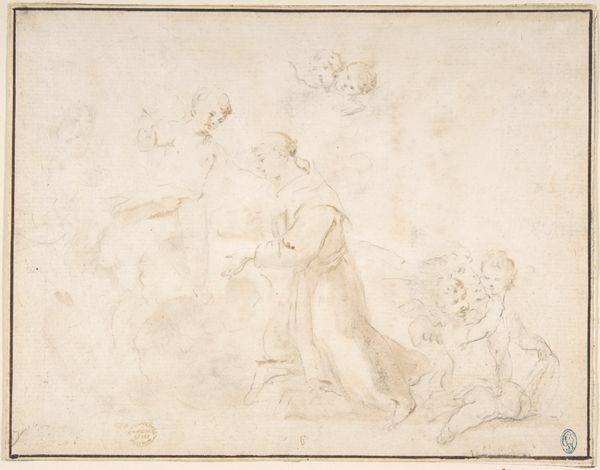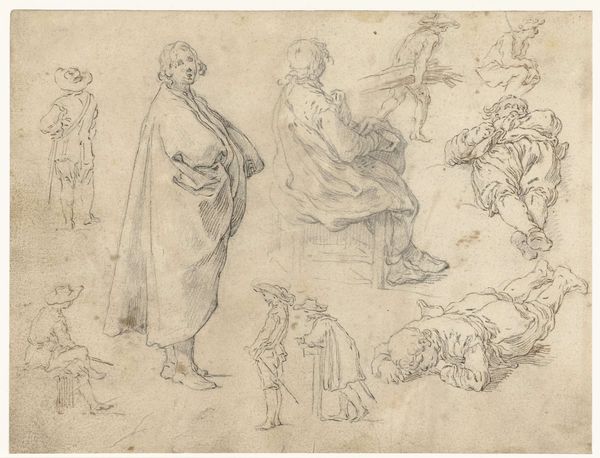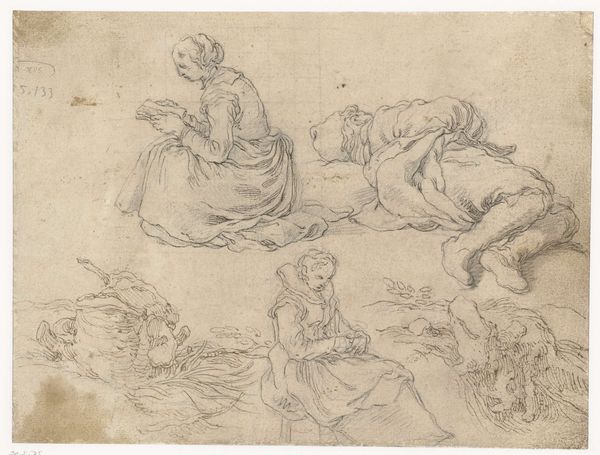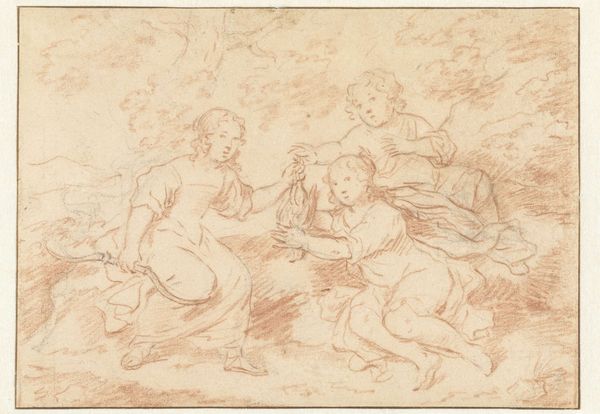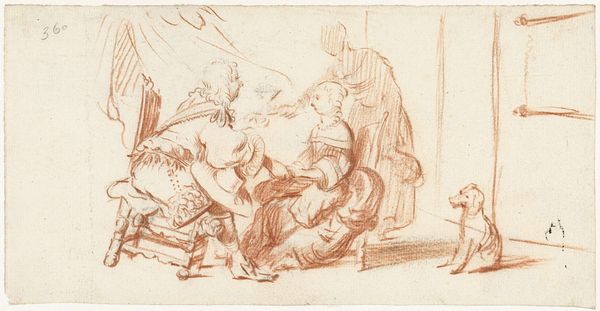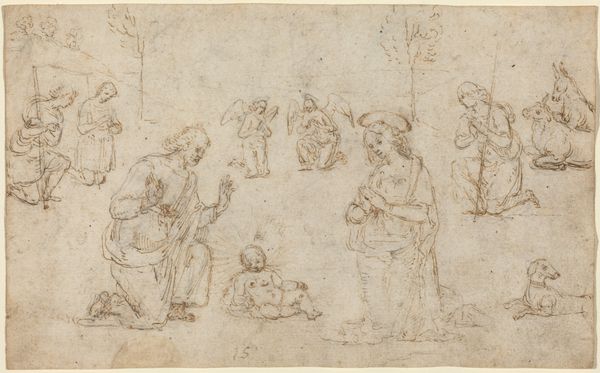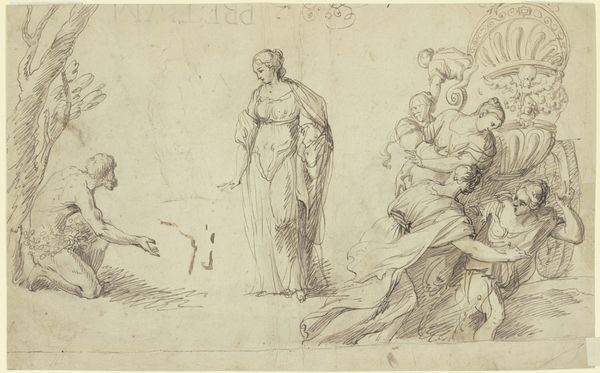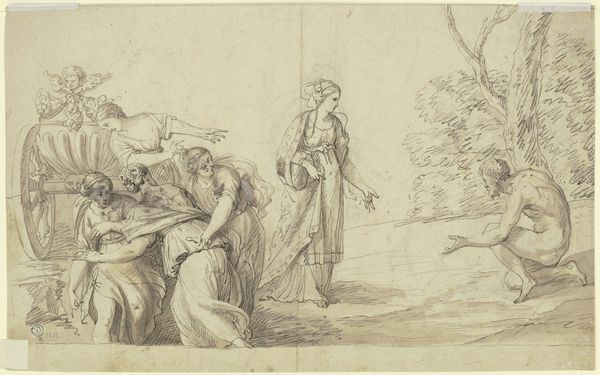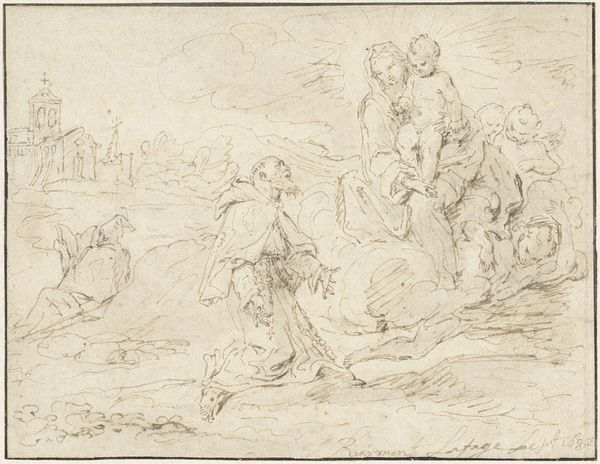
Schetsblad met een staande en enkele zittende figuren 1620 - 1664
0:00
0:00
drawing, paper, pencil
#
drawing
#
baroque
#
pencil sketch
#
etching
#
figuration
#
paper
#
pencil
#
genre-painting
Dimensions: height 94 mm, width 104 mm
Copyright: Rijks Museum: Open Domain
Editor: We're looking at "Schetsblad met een staande en enkele zittende figuren," a drawing made with pencil on paper by Stefano della Bella sometime between 1620 and 1664. The scene depicts several figures in simple, quickly drawn lines. It feels like a fleeting moment captured. What do you see in terms of its production and the context of its creation? Curator: What strikes me is the materiality of this "Schetsblad." It’s not simply the image, but the paper itself, the pencil strokes, the very act of sketching. Consider the baroque period, a time of dramatic shifts in artistic production. How does the artist’s use of relatively accessible materials—pencil and paper—challenge the prevailing norms of high art, which often involved expensive pigments and laborious processes? This sketch becomes a fascinating document of artistic labor, a record of Bella's engagement with the world around him. Editor: That's a great point! It seems so immediate, so raw, compared to highly finished paintings. It makes me think about access too – like, could anyone theoretically pick up a pencil and paper and do this? Curator: Precisely! It brings forth questions about the democratization of art-making. Was this intended as a preparatory sketch for a larger, more 'important' work, or was the sketch itself a valuable commodity? We need to consider the social context. Who was Bella creating this for, and how would the perceived value of this "Schetsblad" shift depending on its audience and intended purpose? Editor: So it's not just *what* is depicted but also *how* and *why* it was made that’s significant. Curator: Exactly. The choice of materials and the swiftness of execution tell a story about the artist's labor, the potential audience, and the broader economic and social structures of the time. It urges us to rethink the boundaries between fine art and the everyday practice of drawing and record-keeping. Editor: That’s definitely given me a lot to think about! I see how a simple sketch can be so rich in meaning when we consider its materials and context. Curator: It shows us the value in what some consider minor or a mere "sketch." It’s about unearthing these often-overlooked facets of art history.
Comments
No comments
Be the first to comment and join the conversation on the ultimate creative platform.
